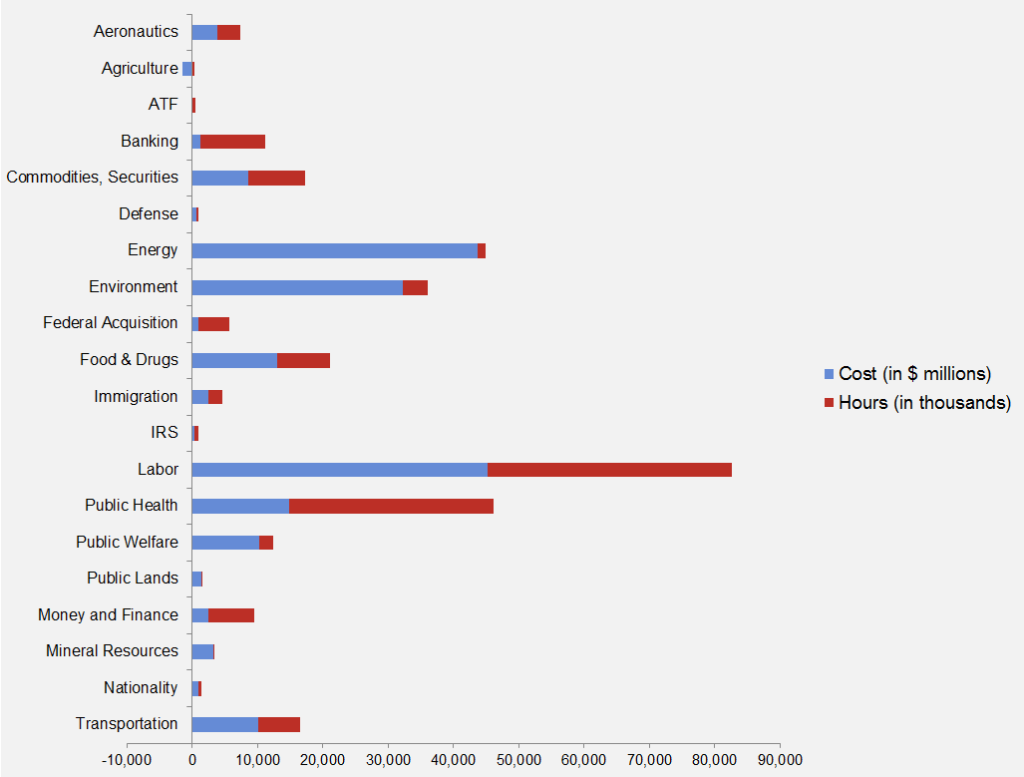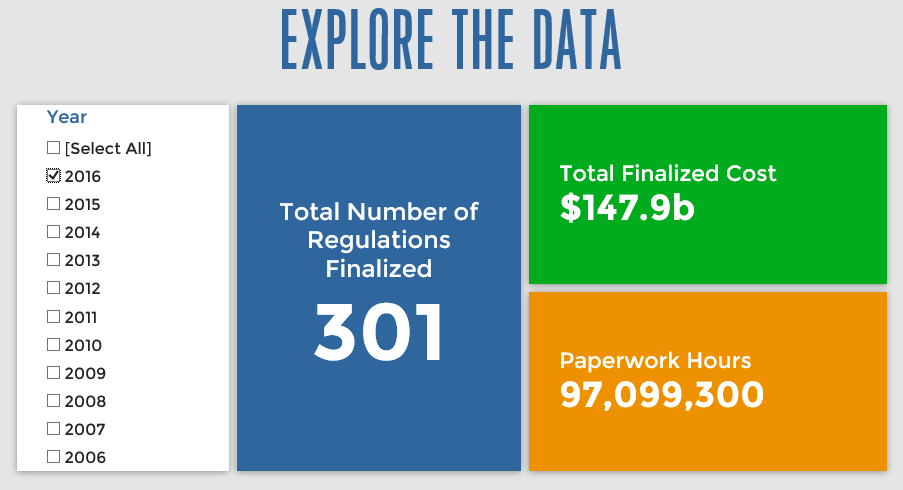Week in Regulation
October 31, 2016
Only $32.3 Billion in Costs
The final publication of the second round of efficiency standards for heavy-duty trucks added $29 billion of the $32 billion in costs this week. Regulators published $2.8 billion in annual costs, $21 billion in benefits, and added 66,000 paperwork burden hours. A Department of Energy (DOE) direct final rule also added $2.9 billion in long-term costs. The per capita regulatory burden for 2016 is $606.
Regulatory Toplines
- New Proposed Rules: 48
- New Final Rules: 62
- 2016 Total Pages of Regulation: 75,314
- 2016 Final Rules: $147.86 Billion
- 2016 Proposed Rules: $48.7 Billion
The American Action Forum (AAF) has catalogued regulations according to their codification in the Code of Federal Regulations (CFR). The CFR is organized into 50 titles, with each title corresponding to an industry or part of government. This snapshot will help to determine which sectors of the economy receive the highest number of regulatory actions.
On August 16, 2016, the administration released the second round of efficiency standards for heavy-duty trucks. After a wait of 69 days, EPA formally published the measure, estimating total costs of $29.3 billion, down slightly from the proposed version. Annual costs are roughly $2.5 billion, with benefits estimated at $19.8 billion, although it does not immediately appear the agencies calculated annualized figures. As AAF highlighted earlier, the cost increases would be significant: a typical tractor-trailer would be $7,350 more expensive by 2021 and $13,550 by 2027. According to RegRodeo, this rule is now the fifth most expensive recorded since 2006, slightly below this year’s Fiduciary Rule.
In a rare move for an economically significant measure, DOE published a direct final rule to impose efficiency standards on miscellaneous refrigeration products. Cumulative costs will exceed $2.8 billion, with $153 million in direct costs, and $771 million in benefits. DOE estimates the rule will cumulatively remove 91.8 million tons of CO2, or 1.3 percent of annual U.S. output. The cost of abating each ton is $31, roughly the average under the Obama Administration.
The Department of Housing and Urban Development (HUD) proposed minimum property standards for new construction in floodplains. Buildings will need to be elevated two to three feet above base flood elevation. HUD estimates costs of $47 million, with 30-year benefits of just $33 million. In addition, the cost of a single-family home will increase by $5,000 and multi-family homes will be $70,000 more expensive because of the regulation.
Affordable Care Act
Since passage, based on total lifetime costs of the regulations, the Affordable Care Act has imposed costs of $51.6 billion in final state and private-sector burdens and 173.4 million annual paperwork hours.
Dodd-Frank
Click here to view the total estimated revised costs from Dodd-Frank; since passage, the legislation has produced more than 74.8 million final paperwork burden hours and imposed $36.5 billion in direct compliance costs.
Total Burdens
Since January 1, the federal government has published $196.6 billion in compliance costs ($147.86 billion in final rules) and has imposed 132.3 million in net paperwork burden hours (97 million from final rules). Click below for the latest Reg Rodeo findings.












